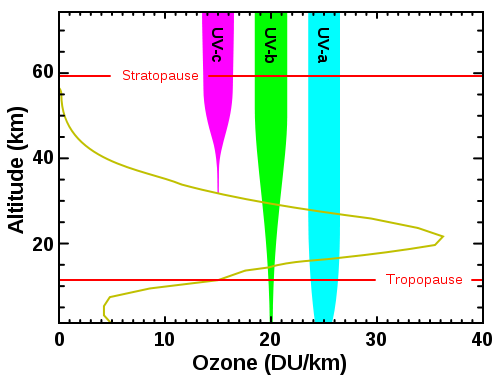-
A
absorbs the UV-A
-
B
absorbs the UV-C
-
C
absorbs the UV-B
-
D
All
- Share this MCQ
B
Answer:
B
Levels of ozone at various altitudes and blocking of different bands of ultraviolet radiation. Essentially all UVC (100–280 nm) is blocked by dioxygen (from 100–200 nm) or else by ozone (200–280 nm) in the atmosphere. The shorter portion of the UV-C band and the more energetic UV above this band causes the formation of the ozone layer, when single oxygen atoms produced by UV photolysis of dioxygen (below 240 nm) react with more dioxygen. The ozone layer also blocks most, but not quite all, of the sunburn-producing UV-B (280–315 nm) band, which lies in the wavelengths longer than UV-C. The band of UV closest to visible light, UV-A (315–400 nm), is hardly affected by ozone, and most of it reaches the ground. UV-A does not primarily cause skin reddening, but there is evidence that it causes long-term skin damage.
Click me to Read more Question & Answer of
 Atmosphere
Atmosphere
Share this MCQ
 First in India
First in India  First in the World
First in the World  Calendar, Dates
Calendar, Dates  North America
North America  Number of Players in Games
Number of Players in Games  World's Longest
World's Longest  World's Highest
World's Highest 